"U.S. President Franklin Delano Roosevelt and First Lady Eleanor Roosevelt visit Victoria on 30 September 1937" British Columbia Archives.
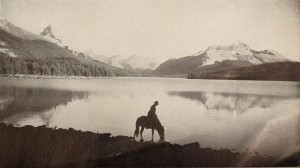
"Western Holiday offered one of those thrills in the sequence of sunrise on Mount Robson. Here Kodachrome caught, with what seemed magic, the first rosy glow on the cold, blue snow, which the continuity of photographic motion permitted to increase, to blossom and, finally, to blaze into a chromatic crown of jewels. To see this on the screen is to enjoy a rare experience. Hamilton H. Jones, in the highly intelligent cutting of his train sequences, gave the student of continuity another of these thrills. Those who are charmed by double turntable accompaniment will recognize the perfection with which an almost impossibly difficult feat of lip synchronization with record scoring has been handled. These are some of the higher spots in a film of unusually high general average. Mr. Jones is a Kodachrome movie maker of proved ability, who has made editing a special art. The film chosen for the first Hiram Percy Maxim Memorial Award will be used by Mr. Jones in his work as a lecturer on the vacation advantages of the Dominion of Canada, although it was made as his own enterprise, entirely at his own expense and not for compensation from a client. It is a part of his professional equipment. Briefly reviewed, Western Holiday carries the audience, via Canadian National Railways, from Victoria, Canada's most westerly metropolis, across the Rocky Mountains back to the Eastern Seaboard. Beginning with city views in Victoria and Vancouver, with strikingly colorful parades of the famous Canadian Mounted Police, we visit tourist centers and make trail trips from them. The camera goes into the interior of a glacier, it finds mountain goats and sheep, it clambers over the Continental Divide on horseback. All through the trip, it studies the progress of trains, weaving in and out of tunnels and over bridges. In his personal presentations of this film, Mr. Jones manipulates effects, such as whistles, bells, train noises and other oddments, with something approaching wizardry. In the face of competition of the highest order, Western Holiday is its own justification of preferment." Movie Makers, Dec. 1937, 602.
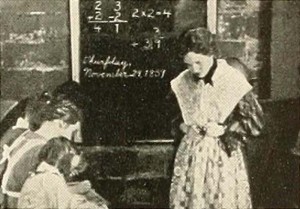
"The Birth of St. Mary's, by Robert F. Gowen. is a deeply moving and well nigh incredible accomplishment in amateur film production. Described as a chronicle in retrospect by the church that it pictures, the film moves bravely into the treacherous domain of costume drama and emerges triumphant. To recreate the gracious life of another day, to catch the feeling of its clothes and the flavor of its customs, to stage all of this against settings not only dramatically sound but full of beauty as well — such were but part of the problems of the producer. Perhaps greatest of all was the task of carrying on each step of this work with the willing, but often wilting, help of an entire community, the accomplishment, through infinite patience, of holding this group together for an entire year. Mr. Gowen has done it all superbly well. To this triumph of teamwork he has added sensitive direction, finished acting by his players and genuinely first rank color photography of largely interior setting. A double turntable musical score, carefully selected for historical accuracy, accompanies the production. The Birth of St. Mary's is a loving and lovely testimony, destined to increase steadily in stature as it becomes itself a part of the past." Movie Makers, Dec. 1937, 602-603.
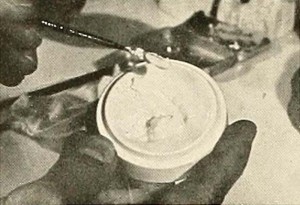
"It is probably safe to say that nowhere in the world has been made a dental picture more perfect in detail than Complete Operative and Prosthetic Technic for Porcelain Jacket Crown Restorations. Dr. Milton Cohen has portrayed this highly intricate and skilled dental project in superb Kodachrome closeups. Not only do the ultra close shots of the work in the oral cavity achieve great fidelity as to color, but also the many operations in the dental laboratory are filmed with equal expertness. Certain steps in the procedure are portrayed by the use of heroic steed models, and these scenes were smoothly integrated with the scenes taken in the mouth of the living model. Although treating of a subject necessarily highly technical in nature, the titles were so well written that they made the film clear to a layman. The picture is distinguished by even exposure, sharp focus, good lighting and excellent camera angles. It is interesting to note that Dr. Cohen not only made the picture but also did all the work shown in it." Movie Makers, Dec. 1937, 603.
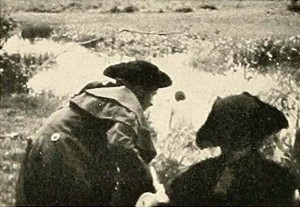
"The Least of These handles a difficult subject in a way which promotes the cinematic medium to a high position as a sympathetic interpreter of the afflicted. Ripley W. Bugbee has presented a fine understanding of the problem of those whose minds are crippled and has given a clear cinematic exposition of the humane methods used in one institution to bring to these persons, young and old, a productive happiness. The film opens with a historical presentation of the problem of feeblemindedness, in a sequence which is smooth and effectively handled in costuming and direction as well as in photographic technique. Passing on to modern times, the work of a present day institution is shown in all its aspects. The handling of the color medium is exceedingly well done, particularly in those ordinarily difficult shots of interior activities. The closeup work, showing details of the manual operations involved in craftsmanship, is unusual in quality. Well chosen angle shots add variety to the film, which is expertly titled in the Kodachrome medium." Movie Makers, Dec. 1937, 603.
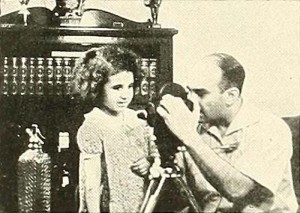
"Already well in the forefront of contemporary photoplay producers, Charles J. Carbonaro has taken a marked step onward in his current comedy, Little Sherlock. Simply planned yet smoothly integrated, this new production tells a delightful tale of the precocious daughter of a photographer, who was always "helping" father. How, during a surprise robbery of their home, she records the crux of the event with Daddy's amateur movie camera provides a denouement which is both satisfying and successful. In Little Sherlock, Mr. Carbonaro has more than maintained the suave lighting and impeccable technical standards for which his work is known; he now wins new honors with a display of genuine talent for light comedy direction. To both of these credits must be added praise for his own acting of the busy cameraman and for the portrayal of the eager apprentice by his own daughter, Alice." Movie Makers, Dec. 1937, 603.
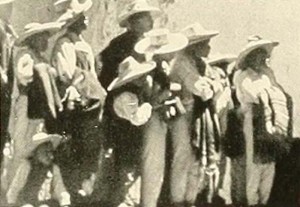
"One comes from a screening of Primitive Patzcuaro, by Ralph E. Gray, with an overwhelming impression of pure beauty. Here, in compositions which often echo the Old Masters in their warmth of color and satisfying balance, an amateur movie maker has turned his camera on the simple life about him and found it pleasing. One after another, the magnificent scenes and sequences bring from the spectator that involuntary expression of deep pleasure which is ambrosia even to the great of amateur movies. In Primitive Patzcuaro, Mr. Gray has portrayed, with leisure, the life of the Tarascan Indians, remote from civilization in a rarely visited section of Mexico. Although magnificent in its color studies, the film is abundant in human interest as well; in portions devoted to the bright native dances and religious ceremonies, it presents a series of tableaux that are breath taking in their effectiveness." Movie Makers, Dec. 1937, 626-627.
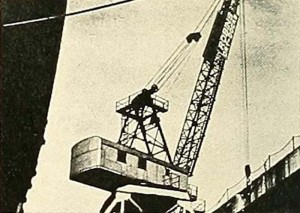
"In From the Sea, produced by Fenno Jacobs for Todd Shipyards Corporation, establishes a precedent this year, for it is the first 16mm sound film, directly recorded in this medium, to be offered for Ten Best consideration in the Special Class. But the fact that this film carries its own directly recorded sound is only one of its many unusual qualities. It tells an interesting and dramatic story of the manifold activities that make up a working day in a great shipyard, where the monster ships are hauled from their native element without ceremony and attacked by a swarm of workers who specialize in every known form of ship repair. By handling this material with great technical facility and by fine editing tempo, excellent choice of camera viewpoint and a flair for cinematic effectiveness, Mr. Jacobs has succeeded in creating an industrial picture which has a high general interest. Among the many noteworthy sections of this film is the sequence which shows the workers' lunch hour. It is outstanding for its fine cutting and for the dramatic pause which creates a respite from the Titanic activities of the working hours. Interesting also is the sound accompaniment which is an integral part of the film and which, in addition to a spoken commentary and spot recording of shipyard sounds, includes well chosen excerpts from Stravinsky's suite, The Fire-Bird, to establish a modern mood." Movie Makers, Dec. 1937, 627.
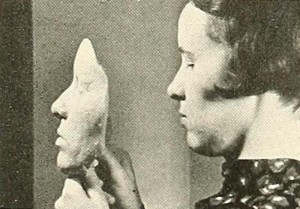
"In Moulage For Masks, filmed for Dr. G. A. Peterson, Dr. James E. Bliss presents with satisfying clarity a step by step study of the procedure of producing the facial masks used to guide the operator in making dental restorations. A logical and carefully prepared script, added to finished camera work and exact editing, has created a color picture that gives an amazing amount of information in brief footage. It is a classroom film of notable competence, both because of the logicality of the cinematic thinking that it represents and because of the successful manner in which it always focuses audience attention on significant action. Carefully written titles integrate perfectly with the sequences, and the whole forms as compact a study as could be produced on this subject. At the same time, an eye for color composition and human interest has made the reel attractive from the layman's point of view." Movie Makers, Dec. 1937, 627.
"Good classroom film describing a method for the construction of facial casts by the use of a rubber like 'Moulage' for the impression. The photographic quality of the film is so good and the subject matter so interesting that the film is far above average. The color of course adds to its attractiveness. Film follows the instructor through the procedure of making a mask." Educational Film Catalog, 1939, 227.
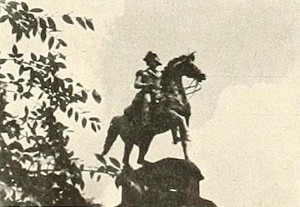
"To love a place so well that you can film it so well that the result becomes commercially sought is not the happy fortune of every movie amateur. Waldo E. Austin's Richmond Under Three Flags was paid for by the Morris Plan Bank of Virginia, in Richmond, and is distributed by the Virginia Conservation Commission. Here, a man of culture and a filmer of exceptional care and refinement has given us his own home, lovingly and interestingly presented, with a happy quota of cinematic ornaments. The pace of this accomplishment is leisurely, as was the Old South, yet its manner is modern, as is the new Richmond. In the title wordings, Mr. Austin is especially fortunate, avoiding banality on the one hand and '"fine writing" on the other, with just enough rhetoric to give the flavor of one of the country's most rhetorical centers. The interior scenes of public buildings have been accomplished with an apparent effortlessness that conceals a great deal of effort. Here is the publicity film in its most suave expression." Movie Makers, Dec. 1937, 627-628.
Total Pages: 299